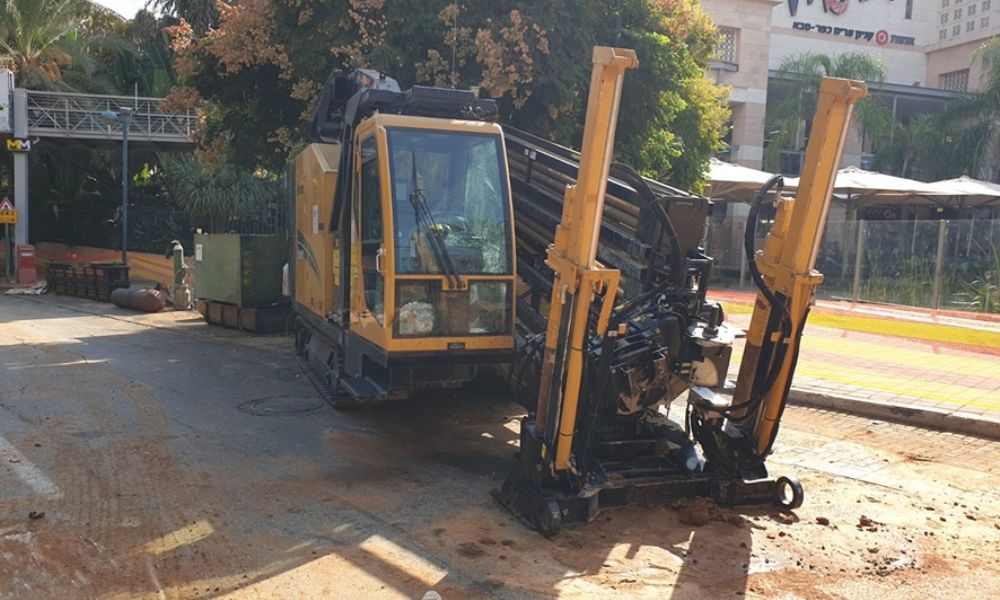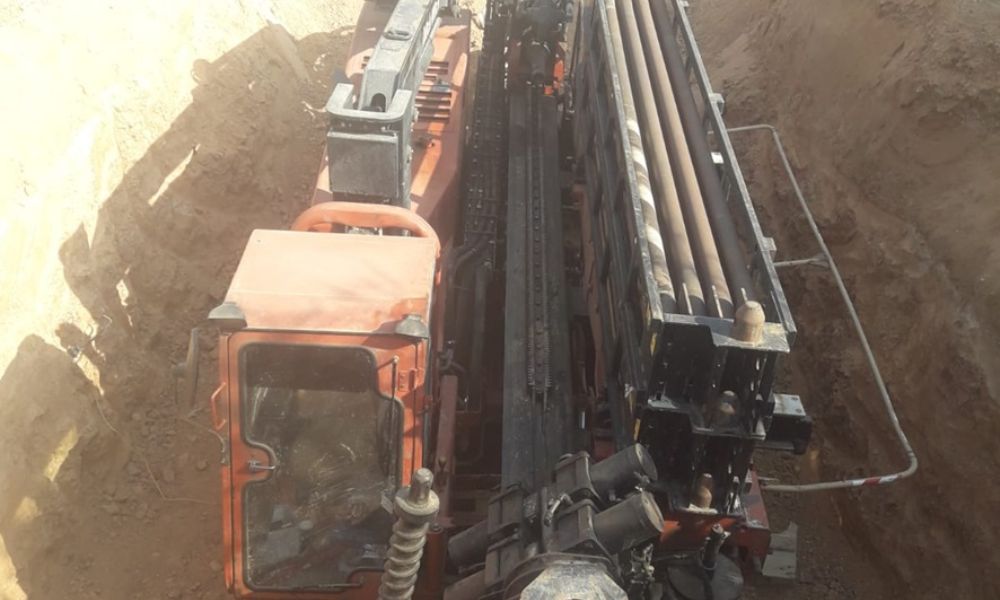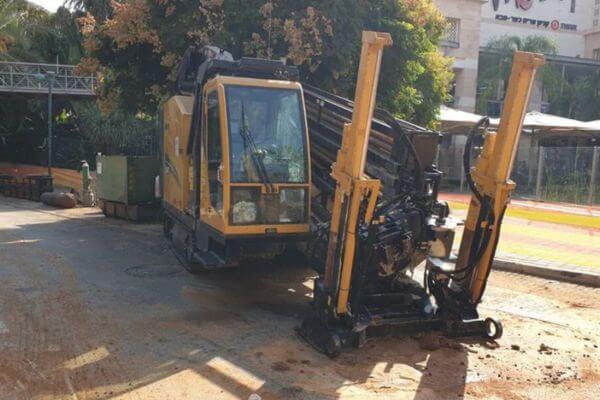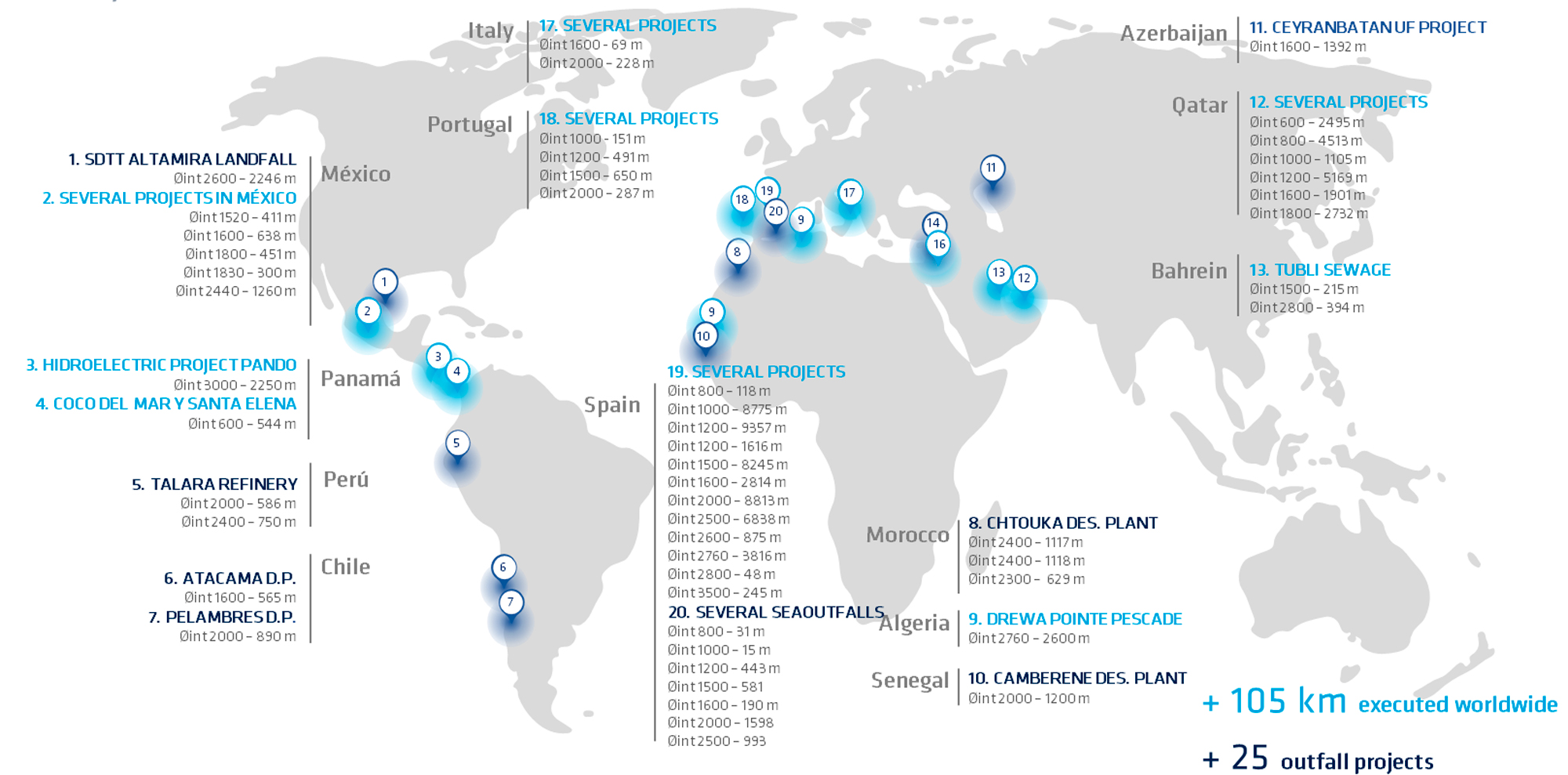Horizontal directional drilling

Advantages of horizontal directional drilling
The perforación horizontal dirigida (HDD) es una tecnología sin zanja extremadamente versátil, ideal para cruces subterráneos de servicios en entornos urbanos, industriales y naturales. Este método minimiza el impacto en la superficie y elimina la necesidad de zanjas abiertas.
Su aplicación es clave en proyectos como cruces de áreas marinas protegidas o submarine emissaries, donde se requiere alta precisión y respeto ambiental.
Esta técnica incluye fases de perforación piloto, ensanchado y entubado mediante sistemas como pull back o pipe ramming, adaptando el diámetro al tipo de conducción.
How horizontal directional drilling is performed
El proceso de HDD comienza con un estudio geotécnico y topográfico del trazado, seguido por la perforación piloto desde una plataforma de entrada. Se guía el cabezal de perforación mediante sondas para garantizar la trayectoria deseada.
Posteriormente se amplía el túnel con herramientas de back-reaming y se instala la tubería definitiva mediante tracción o empuje hidráulico.
Puedes consultar buenas prácticas y normativa internacional sobre HDD en el Manual del Instituto Internacional de Perforación Dirigida (IADD).

Especificaciones del servicio de perforación horizontal dirigida (HDD)
La perforación horizontal dirigida es un método SIN zanja para la instalación de tuberías y conducciones mediante perforación piloto guiada, escariado progresivo y tiro final del producto. Su diseño y ejecución vienen definidos por los siguientes parámetros y condicionantes técnicos:
• Aplicaciones principales: Cruces subterráneos bajo carreteras, ríos, líneas férreas, zonas naturales protegidas o áreas con fuertes restricciones de excavación. Se utiliza para redes de abastecimiento, saneamiento a presión, conducciones eléctricas, fibra óptica, gas y sistemas industriales.
• Rango de diámetros instalables: La tubería final puede tener distintos diámetros según el proyecto y el tipo de material (PEAD, acero u otros). El diámetro del escariado y la configuración de herramientas se ajustan a la tubería de producto y a las condiciones del terreno.
• Longitudes habituales de perforación: Tramos de decenas a varios cientos de metros, dependiendo de la profundidad, el radio de curvatura, las tensiones admisibles de la tubería y los límites del equipo HDD empleado.
• Radio de curvatura y trazado: Capacidad para ejecutar trazados en curva en planta y alzado, dentro de los radios mínimos que permitan las herramientas direccionales y la tubería proyectada, respetando esfuerzos de tracción y empuje.
• Condiciones de terreno compatibles: Suelos cohesivos, arenosos, limosos o mixtos. La presencia de gravas o transiciones duras puede requerir herramientas específicas y ajustes en el fluido de perforación. El control del nivel freático forma parte del proceso mediante lodos estabilizadores.
• Construction method: Perforación piloto guiada mediante sonda y localizador, seguida de fases de escariado progresivo hasta alcanzar el diámetro necesario para el tiro de la tubería de producto. La instalación final se realiza por tracción controlada, monitorizando tensión y velocidad.
• Requisitos previos de obra civil: Construcción de accesos y plataformas de entrada y salida, zonas de implantación para el equipo HDD, planta de lodos y espacios logísticos para manejo de tubería y varillaje.
• Fluidos de perforación: Uso de lodos bentoníticos o polímeros para estabilizar el agujero piloto, reducir fricción, evacuar detrito y asegurar la integridad del trazado durante la perforación y el escariado.
• Control de calidad y seguridad: Monitorización de la trayectoria, parámetros de perforación, presión del fluido, tensión de tiro y volumen de retorno. Se verifica la alineación del cruce, el estado final de la tubería instalada y el cumplimiento de los protocolos HSE en zonas de perforación y tiro.
What they think of us
Profesionales técnicos y jefes de obra destacan la precisión de nuestras perforaciones dirigidas y la calidad en la ejecución final, incluso en condiciones geológicas adversas.
Projects around the world
Nuestra experiencia de excavación mediante hinca de tubería de hormigón armado con máquinas tuneladoras de escudo cerrado se extiende por tres continentes, con más de 25 proyectos outfall y cruces en condiciones exigentes. Desde ríos y carreteras hasta zonas urbanas y fondos marinos.
Consulta nuestras obras ejecutadas para ver casos reales.
Request for information
¿Tienes un proyecto que requiere perforación horizontal dirigida?
Cuéntanos los requisitos y te ayudamos a definir la mejor solución sin zanja.
Ventajas, aplicaciones y diferencias de la perforación horizontal dirigida
Explora artículos sobre HDD, sus beneficios frente a métodos convencionales y ejemplos de ejecución en condiciones especiales.
Leer más artículos técnicos

How does horizontal directional drilling work in tunneling?
Horizontal directional drilling (HDD) is a key technology in the construction of tunnels without the need for open excavations. Its

Advantages of horizontal directional drilling at infrastructure crossings
Horizontal directional drilling (HDD) has become an essential technique for subway crossings in infrastructure projects.

What is horizontal directional drilling?
Horizontal directional drilling, also known as HDD (Horizontal Directional Drilling), is a revolutionary technique that has transformed installation
Frequently asked questions about horizontal directional drilling
La perforación horizontal dirigida (HDD) es esencial para la instalación de tuberías, conducciones y servicios en terrenos complejos, sin alterar la superficie.
Gracias a su precisión, es ideal en zonas sensibles como sistemas de captación marina o cruces de ríos y cursos de agua.
Más preguntas resueltas en nuestra FAQ técnica
What is horizontal directional drilling?
The horizontal directional drilling is a technique trenchless to install pipes and pipelines accurately and efficiently. It consists of drilling the ground horizontally using a specialized machine, allowing the installation of pipelines without the need to dig extensive trenches.
What are the main advantages of using horizontal directional drilling?
The main advantages of the horizontal directional drilling include less surface disruption, reduced environmental impact, and the ability to install pipelines in areas with space restrictions or obstacles such as rivers and roads. It is also ideal for projects where high routing accuracy is required.
How is the horizontal directional drilling process performed?
The process consists of three phases: first, a pilot hole is drilled with a small-diameter drill bit from a target trench. Then, the pilot bore is enlarged with a reaming head. Finally, the pipe is installed using a pull back, completing the installation without the need for extensive excavation.
What types of projects are suitable for horizontal directional drilling?
The horizontal directional drilling is suitable for a variety of projects, such as the installation of utility pipelines, trenchless subway wells, y vertical wells. It is also used to pass pipes under rivers, roads, and buildings without disrupting the surface.
What type of machine is used for horizontal directional drilling?
It uses a horizontal directional drilling machine equipped with specific tools for each phase of the process: pilot drilling, guide drilling extension, and back pulling for pipe installation. These machines are designed to offer high precision and control throughout the process.
What are the considerations for horizontal directional drilling in difficult terrain?
In difficult terrain, such as those with hard rock or unstable soils, it is important to adjust the machine configuration and drilling techniques to handle the conditions. Special tools and adapted drilling techniques can be used to ensure project success and minimize problems during installation.


